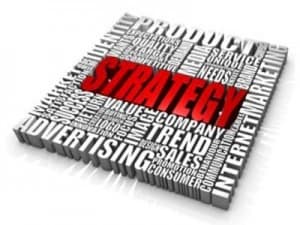Many business ideas and paradigms have been proposed over the years. Some of them turn out to be fads, while others have enduring legacies. While many have merit, they all have one thing in common– they are supposed to address the marketplace in some way. Whether or not they stand the test of time depends on how well they help businesses compete in a globally competitive marketplace.
Enduring business ideas generally become part of an accepted business strategy. One example is Michael Porter’s five competitive pressures (as the keys to strategy) for focusing on operational excellence, customer focus, vendor management, and competitors. The ability to address these competitive pressures is directly related to the quality of consultants your SAP system implementation partner provides.
Changing the enterprise culture to one that is strategically focused and performance based requires several stages. These stages relate directly to the early, upfront work needed for an SAP implementation. Although the following quote is related to implementing a Balanced Scorecard initiative, the same change process applies to an SAP implementation and business transformation.
Initially, the focus is on mobilization and creating momentum, to get the process launched. Once the organization is mobilized, the focus shifts to governance, with emphasis on fluid, team-based approaches to deal with the unstructured nature of the transition to a new performance model. Finally, and gradually over time, a new management system evolves—a strategic management system that institutionalizes the new cultural values and new structures into a new system for managing (emphasis in original) (Kaplan and Norton, pg. 16, 1992)
The authors then note that the “various phases can evolve over two to three years.”
Over my SAP career beginning in 1994, I have seen this over and over. SAP causes a cultural transformation that can be harnessed to achieve great things. Properly implemented and guided through the business transformation process, SAP provides front line managers with key information to move from day-to-day transaction management to longer term strategic management. The idea would be to use SAP as a change enabler or change lever (Change How You Look at SAP to Create ROI). By doing this successfully, you can transform your business in the marketplace (Why SAP Projects Fail to Deliver ROI and How to Change IT).
This transformation process requires a phased approach that moves you through the process from go-live to competency to excellence (Series on SAP Competency Center or SAP Center of Excellence). The reality is with an integrated ERP application such as SAP, it takes about one to three years to change the middle management culture from one of tactical day-to-day execution to one of strategic data analysis and competitive insight.
Mobilization – In SAP terms, the mobilization effort consists of the upfront business planning, strategy definition, goals, and performance metrics definition.
Governance – The governance phase includes the necessary project tools to accomplish the organizational transformation. These are tools and resources not only for the SAP implementation itself, but also for the change management program within the enterprise. In SAP, project governance begins from before the vendor contract is signed and continues on long after go-live to address ongoing business needs and requirements in the live system environment.
Strategic Management – The strategic management system occurs over time as the new metrics, resources, and tools available in your SAP implementation are used throughout the enterprise. It is the old business axiom: “What gets measured gets done.” After go-live, new features or functions may be added to address marketplace competitive pressures. As middle and lower-level managers can analyze actionable data, they can make decisions to more effectively address those competitive pressures.
SAP Organization Change is Ongoing
Depending on your timeline and organizational tolerance for change, by the time the SAP system is stabilized (anywhere from three to twelve months after go-live), your organizational transformation will be well underway. Within 12–24 months after go-live, your organization should begin seeing real benefit from a properly implemented, business-focused SAP implementation.
I personally believe that because so much of the focus has been operational and “getting the system in” for an “on-time and on-budget” implementation, the upfront business work is little known and even less understood by the wealth of “technicians” that most consulting companies provide. Often times, the consulting companies with established client relationships are eager to get as many consultants billing as they can. The several months of upfront strategy work, even at super-premium rates, only engages two consultants. Even in large far-flung enterprises, it only engages four or five consultants. The SAP implementation itself will engage at least five to ten times that many consultants. If a client does not insist on this upfront strategy work, SAP vendors are reluctant to press a client in this direction from the RFP phase on.
That is not to say that consulting companies have not tried– only that customers or host companies have focused so strictly on getting the existing transactional processes into SAP that they often fail to have the upfront business case for change created before the project begins.
To be successful, this upfront business design and change work must become the central focus of the SAP implementation.
SAP Business Transformation for Competitive Advantage
Business transformation with SAP is entirely possible even in massive enterprises, if the business transformation effort begins by mobilizing your team at least a few months before an SAP RFP. After the RFP, you need active change management throughout the SAP implementation. For more information on various insight and ideas on SAP RFP strategies, please see the following articles:
- Breakthrough Project Success: 2 of 4, IT Vendor Proposal RFP
- More on Vendor Selection Criteria and Methods for ERP Project Success
- Breakthrough Project Success: 3 of 4, Vendor Selection and Contracts
- ERP and SAP Business Case for ROI, Business Benefit, and Success
The RFP process is your first real opportunity to find the right vendor and the right consultants to transform your business. By navigating this process successfully, you can start out on solid footing. One thing to always remember is that the quality of consultants on your project determines the results of your implementation. It is not the size of the company, the scope or reach of the consulting firm, how many offices they have, how much marketing material they put out, or how many fancy clients they can name. The only thing that matters is the specific consultants they bring to your business to make a difference in how your business operates.
===========================
Kaplan, R. and Norton, D. (1992), “The Balanced Scorecard – Measures that Drive Performance”, Harvard Business Review 70 (1).






